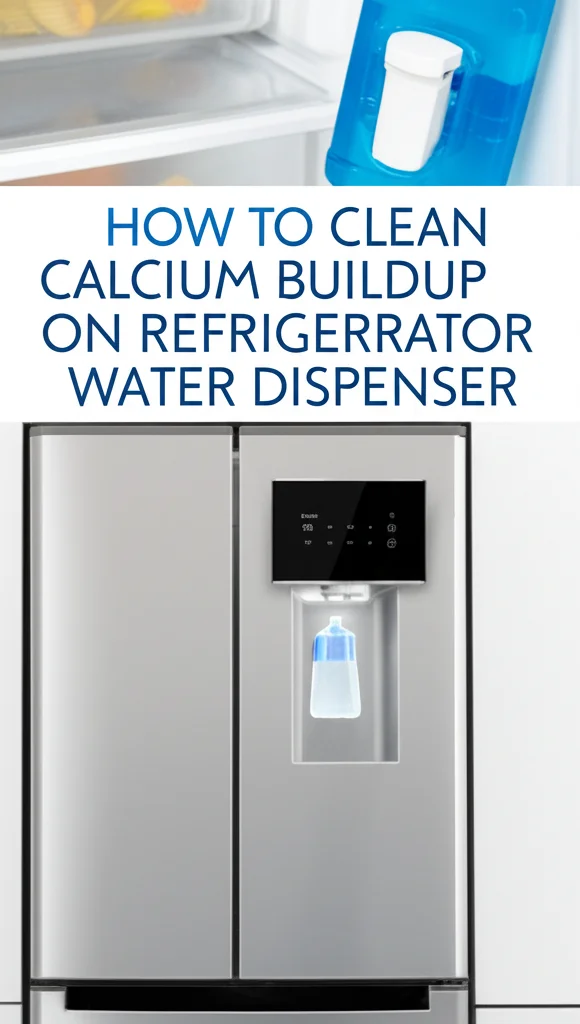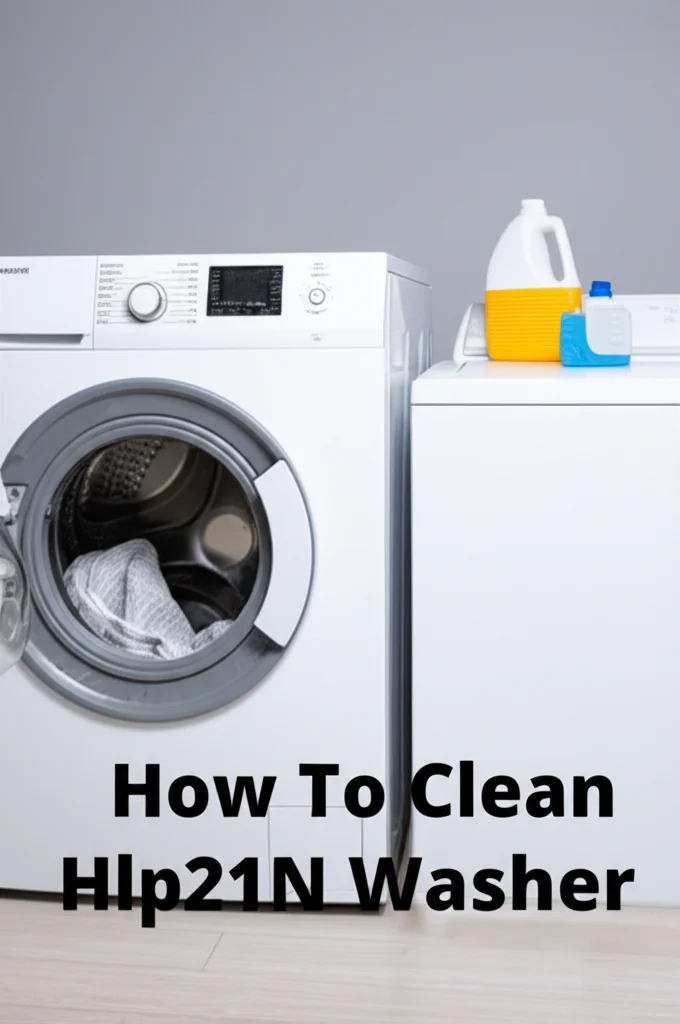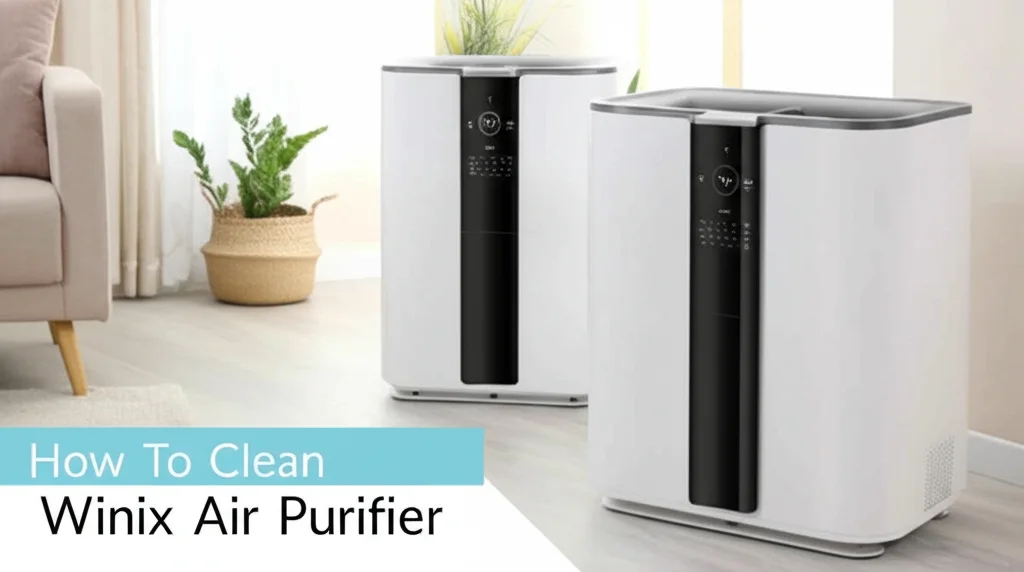· Home Appliances · 6 min read
How To Clean Calcium Buildup On Refrigerator Water Dispenser

How To Clean Calcium Buildup On Your Refrigerator Water Dispenser
Is your refrigerator water dispenser sputtering instead of flowing? You likely have calcium buildup. This common issue affects many refrigerators, especially in areas with hard water. Don’t worry, though! Cleaning calcium buildup from your refrigerator water dispenser is a manageable task. This article will guide you through the process, ensuring you have fresh, clean water in no time. We’ll cover everything from identifying the problem to preventative measures.
Takeaway:
- Regular cleaning prevents significant buildup.
- Vinegar is a safe and effective cleaning agent.
- Flushing the system thoroughly is crucial.
- Consider a water filter for long-term prevention.
What causes calcium buildup in a refrigerator water dispenser?
Calcium buildup happens when minerals, primarily calcium and magnesium, present in your water supply accumulate over time. As water flows through the dispenser’s lines and components, these minerals solidify, creating a chalky residue. This residue restricts water flow, leading to a weak stream or complete blockage. The severity of the buildup depends on the hardness of your water and how often you use the dispenser.
Identifying Calcium Buildup: Signs to Look For
Before you start cleaning, it’s important to confirm you’re actually dealing with calcium buildup. Several telltale signs indicate this is the problem. A slow water dispensing rate is the most obvious symptom. You might notice it takes much longer to fill a glass than usual. Another sign is cloudy or milky-looking water, which indicates mineral deposits are present. Finally, a reduced water volume per dispense is a clear indicator. If you notice any of these, it’s time to tackle the buildup.
Why Cleaning Calcium Buildup is Important
Ignoring calcium buildup isn’t just inconvenient; it can also lead to more serious problems. A severely blocked water line can strain the refrigerator’s water pump, potentially causing it to fail. This can result in costly repairs. Furthermore, calcium deposits can harbor bacteria, compromising the water quality. Regular cleaning ensures your water remains safe and your refrigerator operates efficiently. It’s a small task that can save you a lot of trouble in the long run.
Gathering Your Supplies
Before you begin, gather the necessary supplies. You’ll need white vinegar, which is a natural and effective descaler. A clean sponge or cloth is essential for wiping surfaces. A small bowl or container will be useful for soaking parts. A turkey baster or syringe can help flush out stubborn deposits. Finally, have a pitcher or container ready to collect the flushed-out water. Having everything on hand will make the cleaning process smoother and more efficient.
Step-by-Step Guide to Cleaning Your Water Dispenser
Now, let’s get to the cleaning process. This is a straightforward procedure that most homeowners can handle.
- Disconnect the Power: Safety first! Unplug your refrigerator from the power outlet.
- Empty the Water Reservoir: If your refrigerator has a removable water reservoir, empty it completely.
- Prepare the Vinegar Solution: Mix equal parts white vinegar and water in a pitcher.
- Fill the Reservoir (If Applicable): Pour the vinegar solution into the water reservoir.
- Dispense the Vinegar Solution: Dispense the vinegar solution through the water dispenser. Continue dispensing until the reservoir is empty. This allows the vinegar to dissolve the calcium buildup within the lines.
- Let it Sit: Allow the vinegar solution to sit in the lines for at least 30 minutes, or even overnight for severe buildup.
- Flush with Water: After soaking, discard any remaining vinegar solution and refill the reservoir with fresh water. Dispense several pitchers of water to thoroughly flush out the vinegar and loosened calcium deposits. Repeat this process until the water runs clear and there’s no vinegar smell.
- Wipe Down the Dispenser: Use a clean sponge or cloth dampened with vinegar solution to wipe down the exterior of the water dispenser. This will remove any visible calcium deposits.
- Reconnect the Power: Once everything is dry, plug the refrigerator back into the power outlet.
Cleaning the Water Filter Housing
The water filter housing is another area prone to calcium buildup. It’s important to clean this regularly to maintain optimal water flow. Locate the water filter housing, usually found inside the refrigerator compartment. Remove the water filter. Inspect the housing for calcium deposits. If present, use a vinegar-soaked cloth to wipe them away. You can also use a small brush to scrub stubborn areas. Rinse the housing thoroughly with water before reinserting the filter.
Replacing Your Water Filter
While you’re cleaning the housing, consider replacing the water filter. A fresh filter improves water quality and prevents future buildup. Check your refrigerator’s manual for the recommended filter replacement schedule. Typically, filters should be replaced every six months. Using a high-quality water filter can significantly reduce the amount of calcium and other minerals entering the system.
Dealing with Stubborn Calcium Buildup
Sometimes, vinegar alone isn’t enough to tackle stubborn calcium buildup. In these cases, you can try a stronger descaling solution specifically designed for appliances. Follow the manufacturer’s instructions carefully when using these products. Alternatively, you can use a turkey baster or syringe to directly flush the affected areas with vinegar solution. For extremely stubborn deposits, you might need to repeat the cleaning process several times.
Preventing Future Calcium Buildup
Prevention is always better than cure. Here are some tips to prevent calcium buildup in your refrigerator water dispenser:
- Install a Water Softener: If you have hard water, consider installing a whole-house water softener. This will remove calcium and magnesium from your water supply, preventing buildup in all your appliances.
- Use a Water Filter: A high-quality water filter can remove minerals and sediment, reducing the risk of calcium buildup.
- Regular Cleaning: Clean your water dispenser every 3-6 months, even if you don’t notice any problems.
- Flush the System: Periodically flush the water dispenser with a vinegar solution to dissolve any developing deposits.
FAQ About Cleaning Refrigerator Water Dispensers
Q: How often should I clean my refrigerator water dispenser?
A: Ideally, you should clean your refrigerator water dispenser every 3-6 months. If you have particularly hard water, you may need to clean it more frequently. Regular cleaning prevents significant buildup and ensures optimal performance.
Q: Can I use lemon juice instead of vinegar?
A: Yes, lemon juice can be used as an alternative to vinegar. It has similar acidic properties that help dissolve calcium deposits. However, vinegar is generally more effective and readily available.
Q: Is it safe to drink water after cleaning with vinegar?
A: Yes, it is safe to drink water after thoroughly flushing the system with fresh water. Ensure all traces of vinegar are removed before using the dispenser. The vinegar smell should completely disappear.
Q: What if my water dispenser still doesn’t work after cleaning?
A: If your water dispenser still doesn’t work after cleaning, there may be a more serious issue with the water pump or lines. Contact a qualified appliance repair technician for assistance.
Conclusion
Cleaning calcium buildup from your refrigerator water dispenser is a simple yet important maintenance task. By following the steps outlined in this guide, you can ensure you have fresh, clean water and a properly functioning appliance. Remember to prioritize regular cleaning and consider preventative measures like a water softener or filter. Don’t let calcium buildup ruin your refreshing water supply – take action today! Maintaining your refrigerator’s water dispenser will save you money and hassle in the long run.




